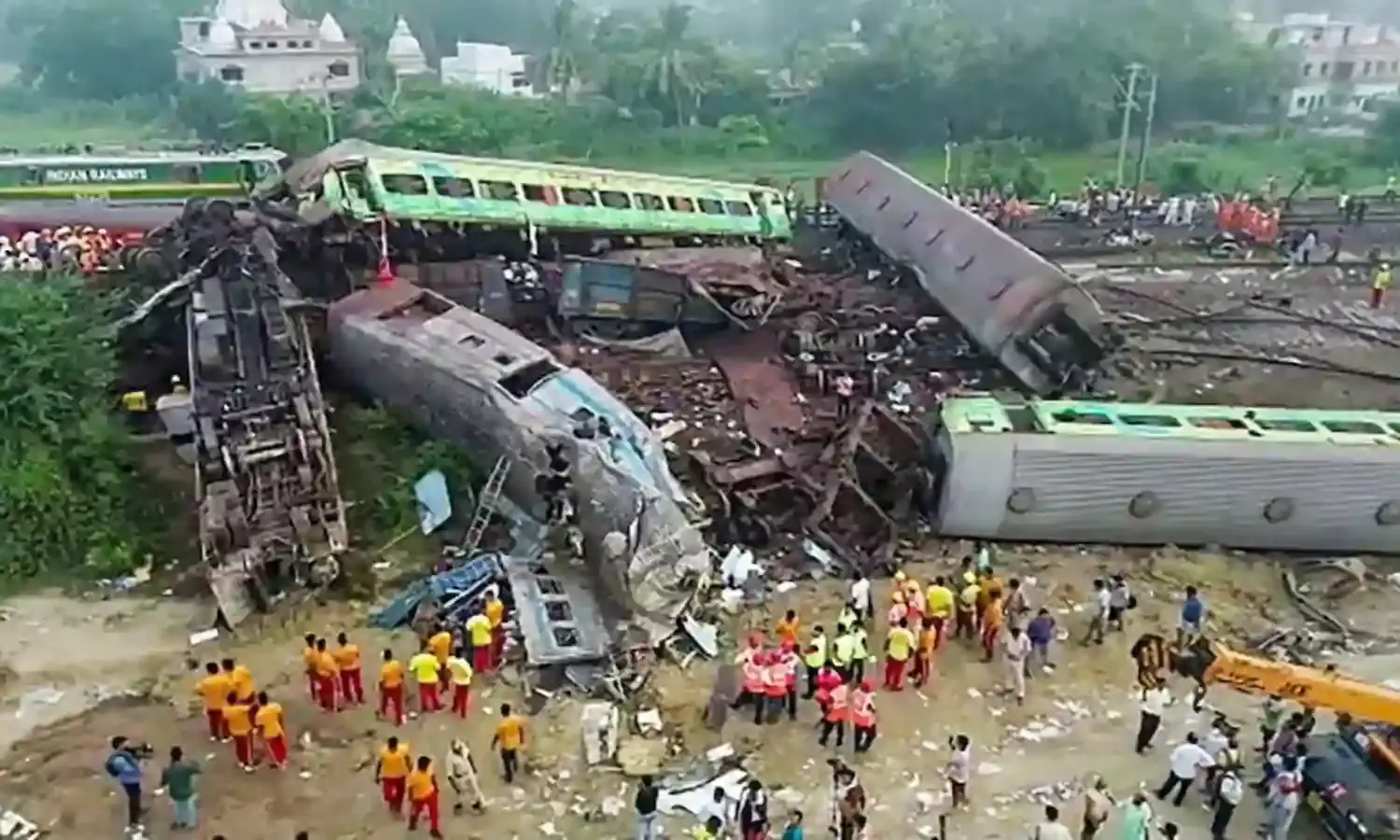Railway Safety Has Been Short of Funds
Resources reduced

Several senior experts and officials have rightly emphasised that safety should get the topmost priority in railways management. In financial terms railway safety requirements were estimated in year 2015-16 at Rs 1,54,000 Crore, by official experts and a decision was taken to meet the major share of Rs 1,19,000 Crore out of this from a special fund to be set up initially for five years to be called Rashtriya Rail Saranksha Kosh (RRSK).
This was to have an annual budget of Rs 20,000 Crore , with Rs 15,000 Crore being contributed by gross budgetary support (GBS) and Rs 5000 Crore to be raised from internal resources of Railways. Later this was extended by five years.
However, the resources were reduced leading to funds crunch for safety, particularly when these cuts followed soon after a crash in resources during the COVID year. Hence there is an urgent need to increase resource availability for railway safety.
Going back to 2015-16, while the need for RSSK was estimated at Rs 1,19,000 Crore over a five year period, actually it got only Rs 1,00,000 Crore , so that it started with a deficit of Rs 19,000 Crore . However, the actual spending has been generally below this too, below the norm of Rs 20,000 Crore per year, as is evident from the budget figures given in Table 1 given below.
RRSK Budgetary Resources
- Actual Expenditure 2017-18: Rs 16091 Crore
- Actual Expenditure 2018-19: Rs 18015 Crore
- Actual Expenditure 2019-20: Rs 15024 Crore
- Actual Expenditure 2020-21: Rs 314 Crore
- Actual Expenditure 2021-22: Rs 24,731 Crore
- Revised Estimate 2022-23: Rs 11,000 Crore
- Budget Estimate 2023-24: Rs 11,000 Crore
While presenting these figures the 14th report of the Parliamentary Standing Committee of the 17th Lok Sabha (PSC) noted recently that the apportionments for the RRSK have been consistently falling short of commitments. It is clear that while there was a shortfall even in the first three years, there was a further big crash in the COVID year.
While efforts to make up were made next year, the lesser resources in the next two years worsened the situation. There was no need for a crash in the COVID year as the GBS funding was already committed and actually it is easier to do some of the safety work like track renewal, construction and some repairs when passenger trains are not running. There was also no justification for reducing RRSK funding while renewing it for five more years.
While at the rate of Rs 20,000 Crore per year (not providing for need for inflationary increase ) a sum of 140,000 Crore was needed in seven years, Table 1 reveals a total availability of Rs 96,000 Crore only during 7 years, or a shortfall of Rs 44,000 Crore . This, combined with the initial shortfall of Rs 19000 Crore , adds up a shortfall of Rs 63,000 Crore , or Rs 9,000 Crore per year.
Unfortunately the railways have been faltering in meeting their commitment of internal resources. This is evident from Table 2 given below. It shows to what extent the railways fell short of the target of providing Rs 5000 Crore from internal resources.
Unmet Targets
- 2017-18: Rs 0 Crore(100% of target unmet)
- 2018-19: Rs 3024 Crore (40% of target unmet)
- 2019-20: Rs 201 Crore (96% of target unmet)
- 2020-21: Rs 1000 Crore (80% of target unmet)
- Total for 4 years: Rs 4225 Crore ( 79% of target not met)
It is clear from this table that instead of providing Rs 20,000 Crore for the first 4 years from internal resources as per commitment, the railways merely provided Rs 4225 Crore ( 21%), while failing to provide Rs 15,775 Crore (79%). While providing these figures in the 22th report of year 2022 of the Comptroller and Auditor General (CAG) titled ‘Derailment in Indian Railway’ it stated that this has defeated the primary objective of creation of RRSK to support absolute safety in the Railways. Earlier a Parliamentary Committee had stated pointing to the same factors that the purpose of RRSK is being eroded.
The CAG report also noted that the utilisation of RRSK has not followed the priorities as rigorously as was needed, at times diverging more towards lower priorities or even some expenses which cannot strictly be said to be within the scope of safety. In fact, even a top priority aspect like track renewal has at times unexplained budget falls, as is evident from the following Table 3, based on PSC figures. This gives data only for RSSK funds devoted to track renewal, and there can be additional funding for track renewal which is not covered here.
RRSK Funds for Track Renewal
- Actual Expenditure 2017-18: Rs 8904 Crore
- Actual expenditure 2018-19: Rs 9697 Crore
- Actual Expenditure 2019-20: Rs 8314 Crore
- Annual Expenditure 2020-21: Rs 0.17 Crore
- Actual Expenditure 2021-22: Rs 16262 Crore
- Revised Estimate 2022-23: Rs 2041 Crore
- Budget Estimate: Rs 2023-24: Rs 1400 Crore
Clearly, there is an urgent need for increasing funds for meeting safety needs of Railways and in particular for strengthening the RRSK.



